Walkopedia thanks our friend Stephen Barber for his fascinating and inspiring account of walking the lesser-frequented Kōhechi Trail, one of the main arteries of the great Kumano Kodo pilgrimage routes in the Kii Peninsula south of Osaka and Kyoto. Take a bow, Stephen!
First, some photos:
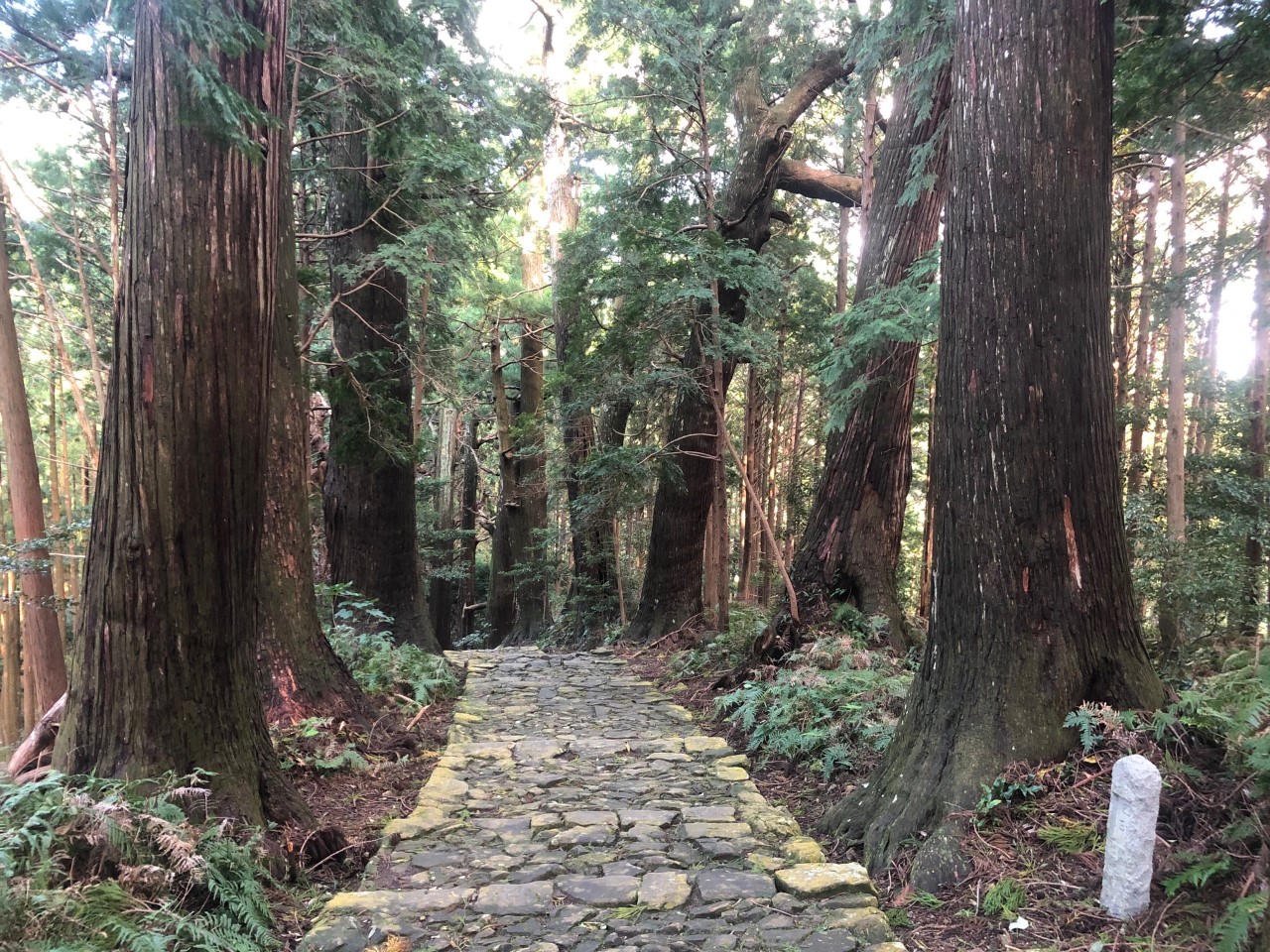
Daimonzaka
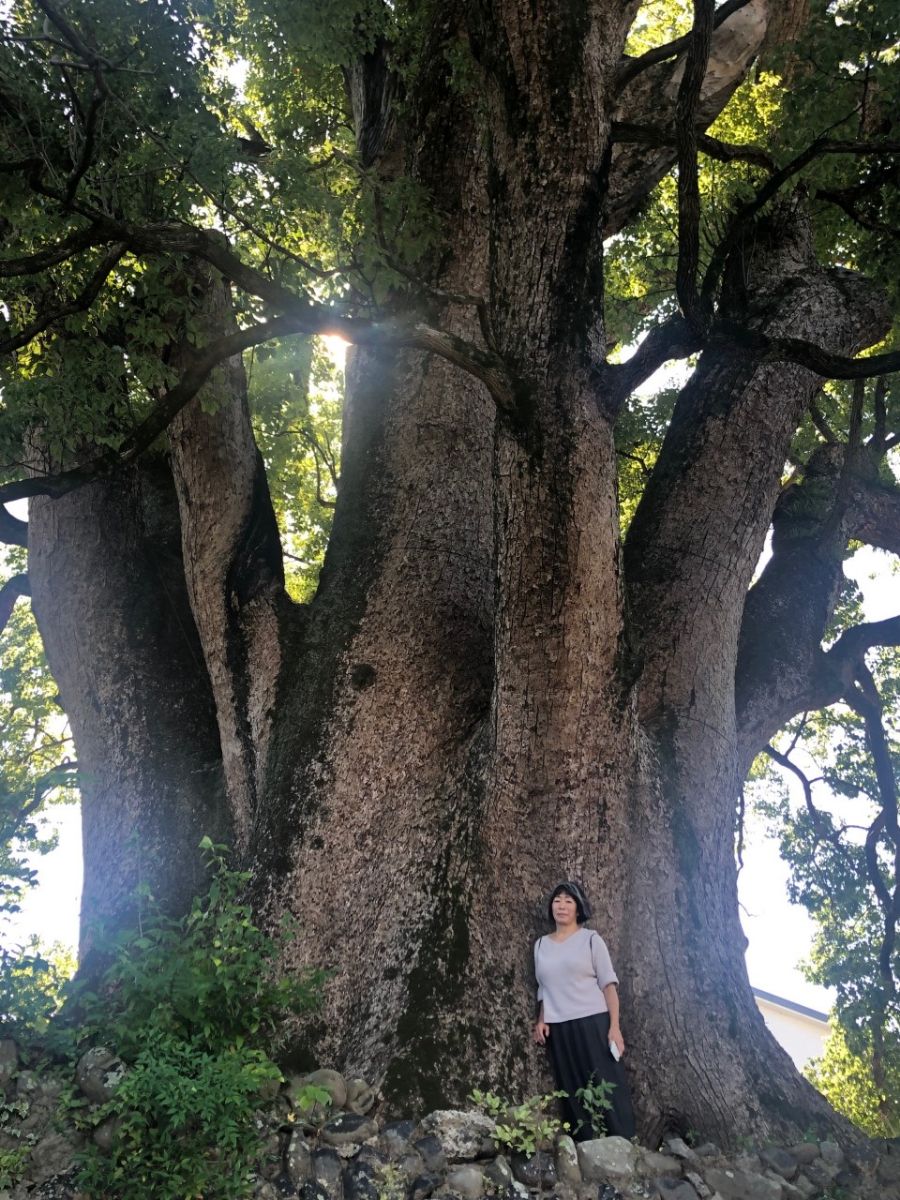
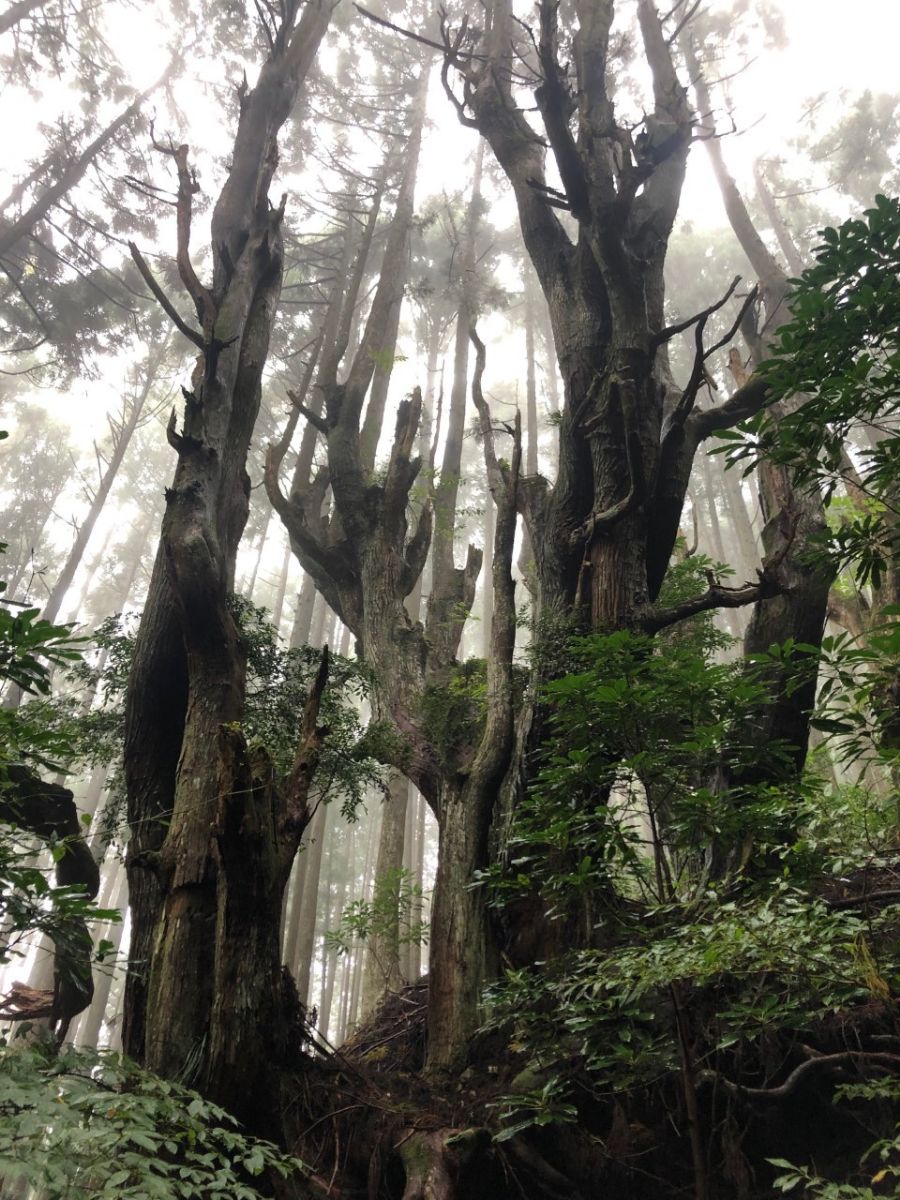
Giant Camphor at Katsuragichō Giant windbreak cedar at the old Yoshimura house
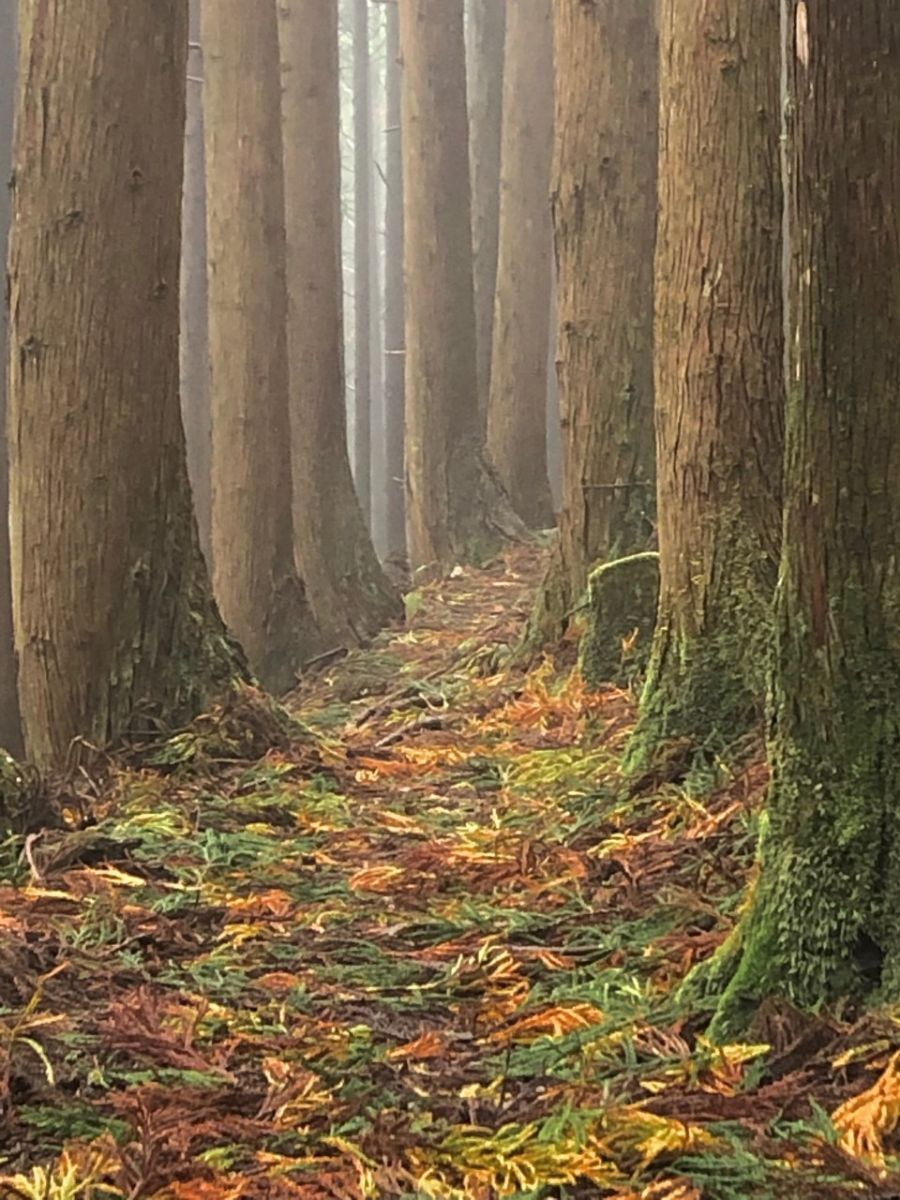
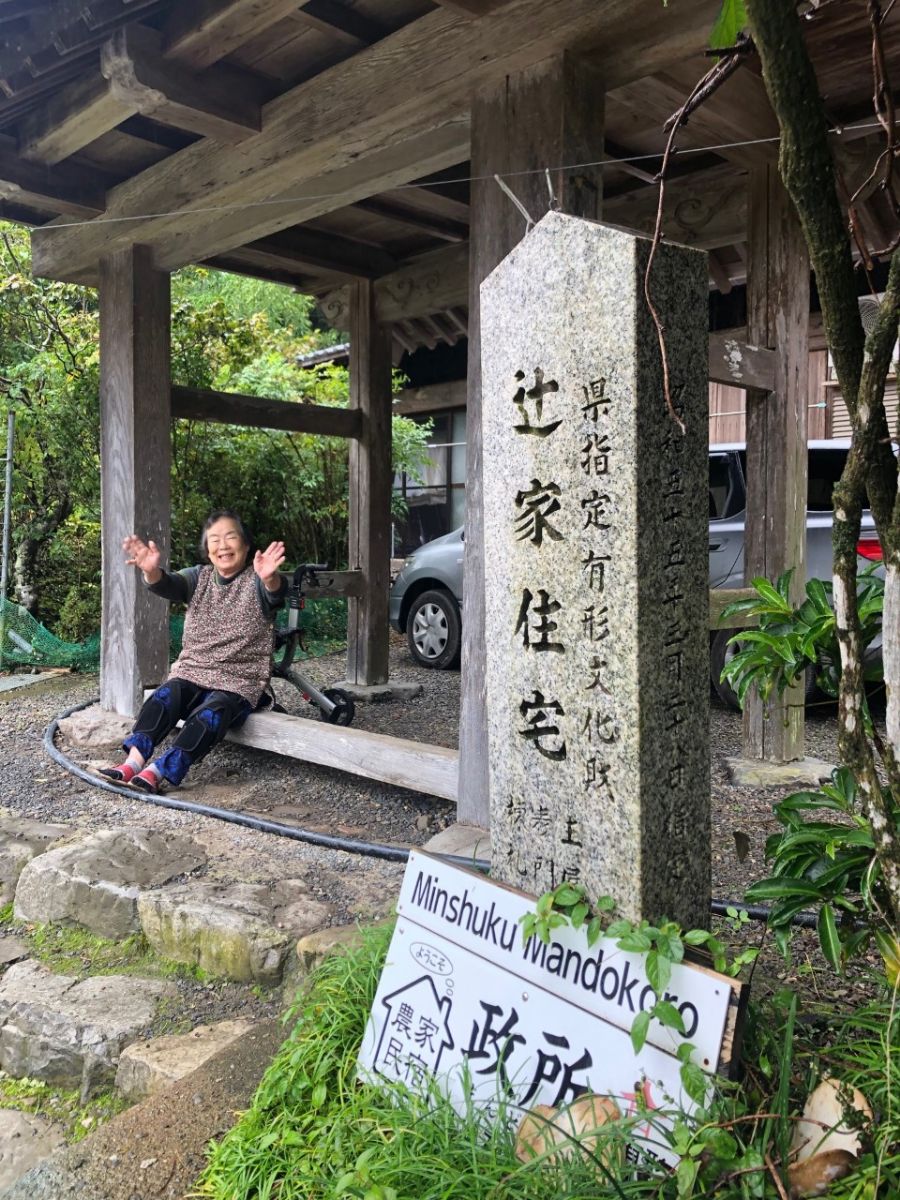
Plantation cedars on the pilgrimage trail Madam Tsuji at the Mandokoro minshuku
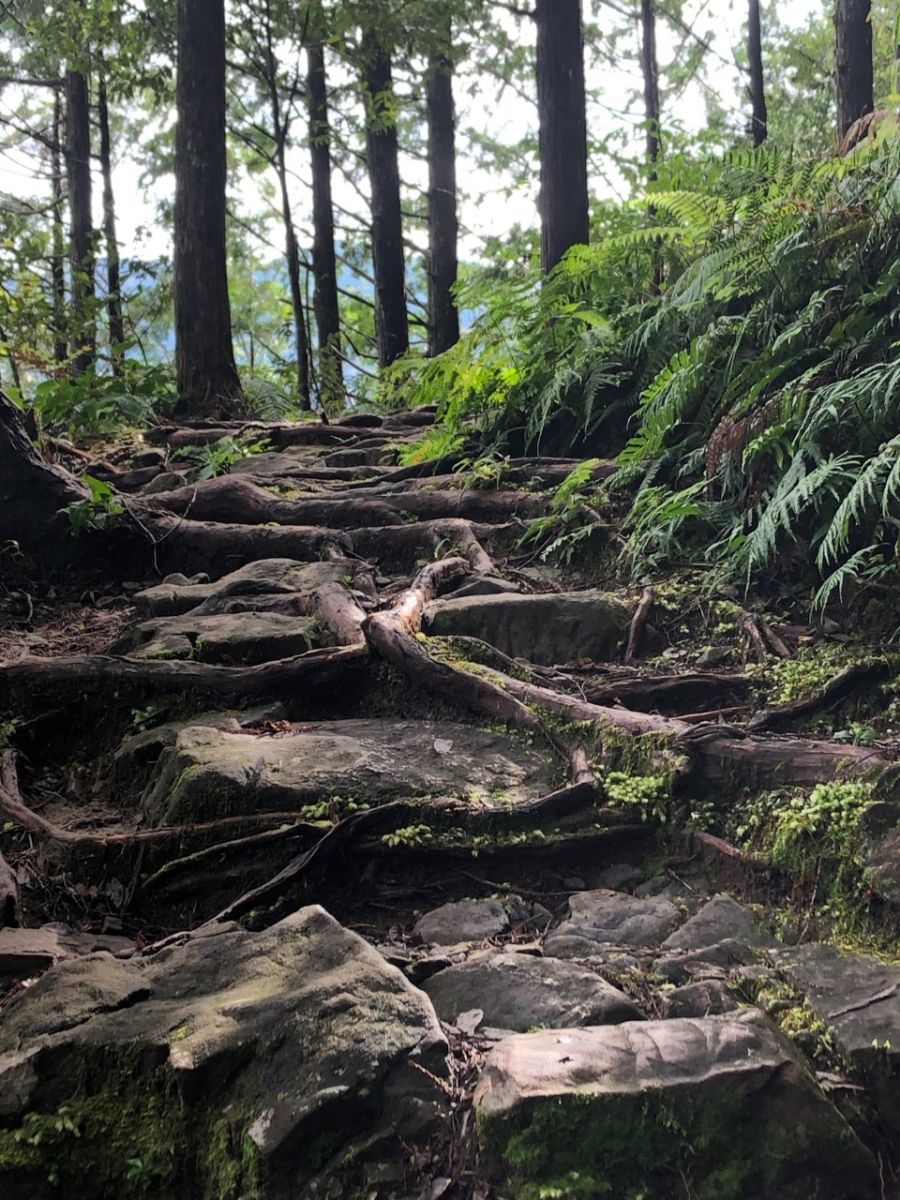

Paved track after Hatenashi The Me-oto-sugi at Daimonzaka
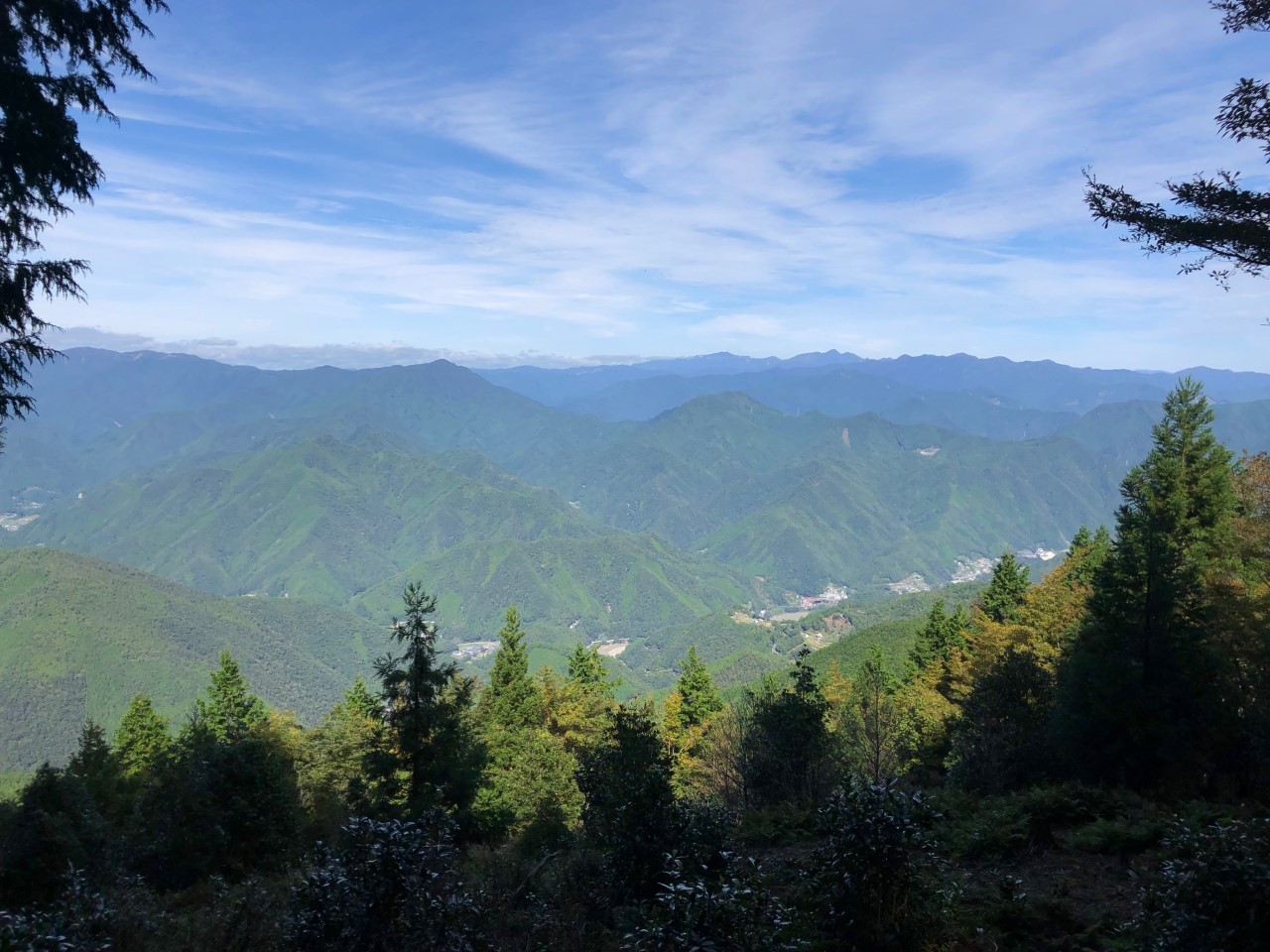
From the Hatenashi-toge pass
Anyone who loves trees, especially ancient trees, and walks the Kōhechi will find themselves in arboreal heaven. From Osaka, we took a car for the two-hour journey south to Koyasan. Halfway, a short detour by the town of Katsuragichō took us to the tiny shrine of Jūgōsha, to meet the biggest living thing in Kansai—a 600-year-old monster camphor tree with a girth of 13.5m (44 feet).
Seasoned travellers in Japan expect exceptional amenities wherever they go. Some will have walked all, or part of, the celebrated pilgrimage routes through Wakayama and Nara prefectures known collectively as the Kumano Kōdō—the Ōhechi, the Nakahechi and the Kōhechi.
Perversely, they may, like my wife Kimiko and I, choose to walk the Kōhechi (the ‘small route’) in October—from the Buddhist monasteries of Mount Koya to the three great Kumano shrines. If so, in four days it’s a 70km walk south-east on one of the most remote, arduous and least frequented trails in Japan—and, except in the valleys, with hardly a single village or even public facility along the way.
But this makes the route, formally known as the Kumano Sankei-michi Kōhechi, is a uniquely rewarding experience. This thousand-year-old pilgrimage way was mapped out and used by Buddhist monks from Koyasan right up to the middle years of the last century. Once well served by tea houses, long since abandoned, the Kōhechi is dotted with their desolate remains, boarded up or even lost to the encroaching forest.
At 800m above sea-level, Koyasan is a cloud-shrouded, sacred site of many dozens of temples, most offering accommodation (shukubo) to pilgrims and tourists. Our aim is to complete the four main sections of the Kōhechi. But not without dropping in on Kongōbu-ji, whose rock garden (Banryūtei) puts Kyoto’s Ryōan-ji to shame.
Then a walk through the vast Okunoin necropolis that has grown up over the centuries around the three-kilometre approach to the mausoleum of Kōbō Daishi (Kūkai), the ninth century monk and founder of Shingon Buddhism. Crammed in among the stands of giant cedar are over 200,000 carved stone cenotaphs, poignantly commemorating the lives of shoguns, feudal lords, samurai, merchant families, army and navy dead; even companies have their lichen-encrusted memorials.
Our first day takes us from Koyasan to Omata, via the Mizugamine pass. It’s a 7-hour, 17km hike, up 700m and down 840m. Each of the four days has a similar pattern: a long climb to the top of a pass, then down into the valley where we spend the night. If the weather’s good, the walk is sublime; if poor, utterly miserable. But either way, memorable.
The path is strenuous, but often good, sometimes paved or cobbled, and on this section, partly on a metalled forest highway. There are signs ordering walkers not to pick prized matsutake mushrooms and, as if to reinforce the threat, warnings of possible bear attacks. We saw neither. Nor did we see a single walker all day; at points along the way, we imagine once bustling scenes as itinerant monks, merchants and pilgrims paused for refreshment, where now there is little to be seen but the stone foundations of an old minshuku inn.
Most of the mountainside forests on the route are plantations of Japanese cedar (cryptomeria, or sugi) and sometimes cypress (hinoki)—not always easy to distinguish. We see nothing but uniform columns rising endlessly into the mist, and on steeper slopes tree trunks left to rot by past clearings. You can experience this either as a sterile monoculture. Or as a mystical trek among the silent sentinels of mountainous Japan .
On the ridges there are remnants of old-growth deciduous forest—oak, fir and red pine—and if the weather’s clear, glorious views of distant peaks.
At Ōtake, about a third of the way, there’s a tiny village, and the only toilet on the route—and well-appointed it is too, with a sophisticated Toto system. Here also is a giant cypress by a small cascade, not to be missed by this tree enthusiast.
Down in the Nosegawa valley, the roadside is lined with wooden houses, locked, silent, apparently uninhabited, their backyard sheds packed tight with firewood, rusting tools, wheelbarrows, flowerpots… There are mossed stone steps and rusty iron staircases that once led somewhere, now surrendered to nature. Japan’s aging population and flight to the cities has emptied the countryside. For the children of the old people who lived here, these rural shacks are practically worthless.
From Omata the next day we climb up to the Obako-toge pass before the long descent to Miura-guchi—another 14.5 kilometres, as demanding on the climb as the descent. On the way up there’s an almost vanished settlement of tea houses, surrounded by rice paddies and fields gone wild. Even in the valleys once-cultivated land is being abandoned because of a rise in wildlife predation from wild boars, bears, deer and monkeys, emboldened by the decline in the human population.
The descent is tough on the knees and thighs, and it’s easy to trip or slip on cedar roots and wet stone steps. The final section of the path before Miura-guchi is deeply creviced, suggesting great antiquity. Part way down are the remains of the Mizugamoto teahouse. Here a mountain witch, or yamamba, is said to have lived—an old woman with red and white features, scarified hair and shining white teeth. Then a final drop down to the valley and the Mandokoro minshuku at Miura-guchi.
The 300-year-old inn is run by old Madam Tsuji and her son. The high school opposite was closed and locked up 18 years ago, but still intact as if waiting for the village to repopulate. The old lady instructs us to use the ofuro (bath tub); dinner is served at 5pm sharp, in the Tsujis’ dining area. Our futons are already laid out in a large tatami room, separated from the Tsujis only by sliding screens. It’s already dark and with nothing else to do we are in bed by 5.30pm.
Next morning the Tsujis are up at 4am. By the time we emerge, the weather is looking mixed, though not yet ominous. Madam Tsuji, on her walking frame, manages a hundred metres or so up the road, smiling and waving until we eventually disappear up the trail.
It soon begins to rain. Before long the former Yoshimura family house emerges from the gloom of the forest. Half a dozen venerable cedars, planted originally as a wind-break half a millennium ago, stand dark, broken, gnarled, but full of character against the plantation versions that now surround them. It’s a gothic, Tolkeinesque scene.
Now thunder and lightening break out and rain begins to fall demonically. Our boots squelch as we climb the steep upward track, now an angry torrent. Should we turn back, or break into the shuttered and locked Yoshimura house for shelter? The weather in the mountains of the Kii Peninsula is notoriously unpredictable. We press on.
Finally, after an 800m ascent, there’s a shelter at the top of the Miura-toge pass, a place to wring out our waterlogged clothes. The rain eases off, a patch of blue sky appears; and now a most beautiful section begins: deciduous forest, deep ravines and tumbling waterfalls. The path is roughly paved in parts, lined with older cedars and red pines. But even in the valley it’s another 8km road walk along the Nishigawa river to the Totsukawa spa. Again, ramshackle, empty dwellings, ghostly factories, overgrown rice paddies.
Dusk falls. A small handyman’s truck pulls up. ‘Do you need help?’ a young man asks. We gladly clamber aboard amidst planks and scaffolding for the ride to the hotel, which is thankfully new and splendid.
The next morning’s walk, our fourth day, is magical—bright sunshine, up through the picturesque, inhabited hamlet of Hatenashi to the Hatenashi-toge pass—a climb of nearly 1000m, followed by a steep descent of 1100m to Yakio. On the way down are thirty-three carved stone kannon (Buddhist bodhisattva deities of mercy). Today a few walkers appear, arriving from the most popular Nakahechi, headed, as we are, for the Kumano Hongu Taisha—the first of the three great shrines.
Although by this stage walking has become second nature, as it were, at Yakio we decided to wait for a bus to take us the last few kilometres. We must have been looking weary, for an old man stops his car and takes us to our destination, chatting happily along the way.
The Adumaya ryokan is an old inn in the atmospheric onsen village of Yunomine, said to be the oldest in Japan. Clouds of sulphurous steam rise from fissures in the fast-flowing river that runs through a deep channel along the tiny high street, bounded by wooded hillsides. In the centre of the river, perched on a small island, is Tsuboyu, a wooden one-person bathhouse.
Our plan for the fifth day is to walk another eight hours or so towards Kumano Hayatama Taisha, along the Nakahechi, but with heavy rain forecast all day, it is an easy decision to call it off. Instead, we take a taxi to the Kumano Hongu grand shrine—moved uphill from the Kumano river after a great flood in 1889. Built in the classic Japanese Shinto style, its graceful cypress bark roofs, bronze ornamentation, curved forking roof finials (chigi) and horizontal beams perpendicular to the roof ridge (katsuogi), though now purely decorative, always seem to evoke mythical Shinto past.
I confess that my interest in the Kumano Hayatama Taisha, at Shingu on the coast, is largely to see the 850-year-old broadleaf Podocarpus tree (nagi). The shrine, painted in vibrant vermilion, was reconstructed in 1951. The tree itself has a trunk 5.5m in circumference, wrapped in a bamboo skirt as befits a sacred tree. The rainfall intensifies and we spend the rest of the day reading at our hotel.
We have saved the best for the last: the 7km walk up Daimonzaka to the Kumano Nachi Taisha, the Nachi falls, and back. Daimonzaka is a 600m slope, paved with great stone slabs forming 267 steps up to the shrine, lined on either side with giant cedars, 3-500 years old. Of the many ancient shrines in Japan, this approach is among the most sublime.
At the top, the Nachi shrine is a fine example of Shinto and Buddhist synchretism. For so long have the native Shinto religion and imported Buddhism coexisted that many shrines and temples exhibit characteristics of both—and indeed cannot be distinguished. Next to the Nachi shrine is the Buddhist Seigantoji temple with a fine 400-year old wooden hall.
Across the valley, past a 1970s concrete pagoda, a steep path takes us to the Nachi falls, the highest in Japan, roaring and swollen after the recent rain. It’s a thrilling spectacle.
Early next morning—our last—I’m up at dawn to the sound of birdsong and running water. I walk to the entrance of Daimonzaka, marked by twin 800-year-old cedars, eight-and-a-half metres round, 55 metres tall. They are the Me-oto-sugi, the ‘husband and wife cedars’, so called because their roots are said to embrace each other under the flagstone path.
Speckled sunlight falls through the rich green foliage. I have my drawing book, but first a moment of communion. Taking off my shoes and socks I stand on the roots of one great tree, place my hands on the trunk and allow its ancient and still vibrant energy to pass through me. Then with my pencil, I seek to capture the spirit of this prodigious specimen of nature. This moment of sensuous immersion somehow seems to hold the key to our entire journey.
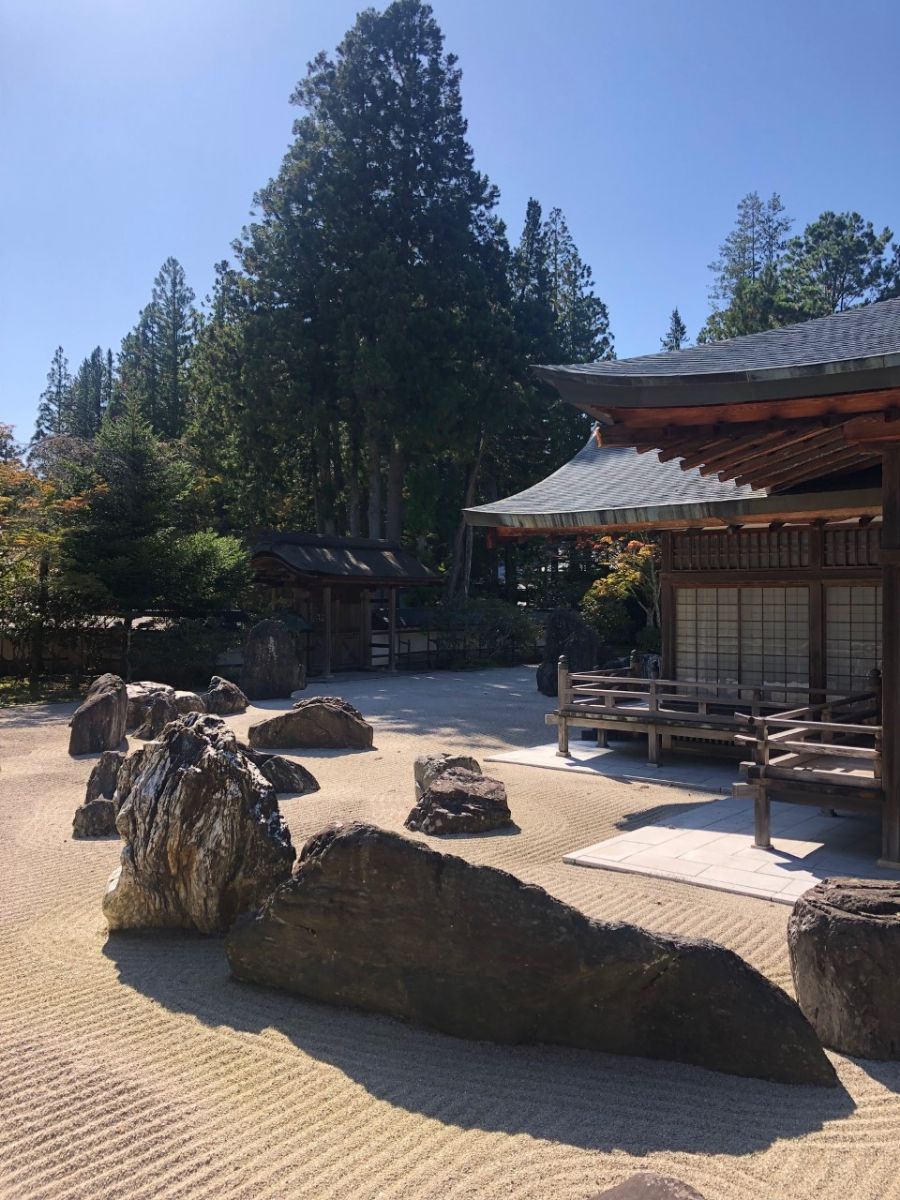
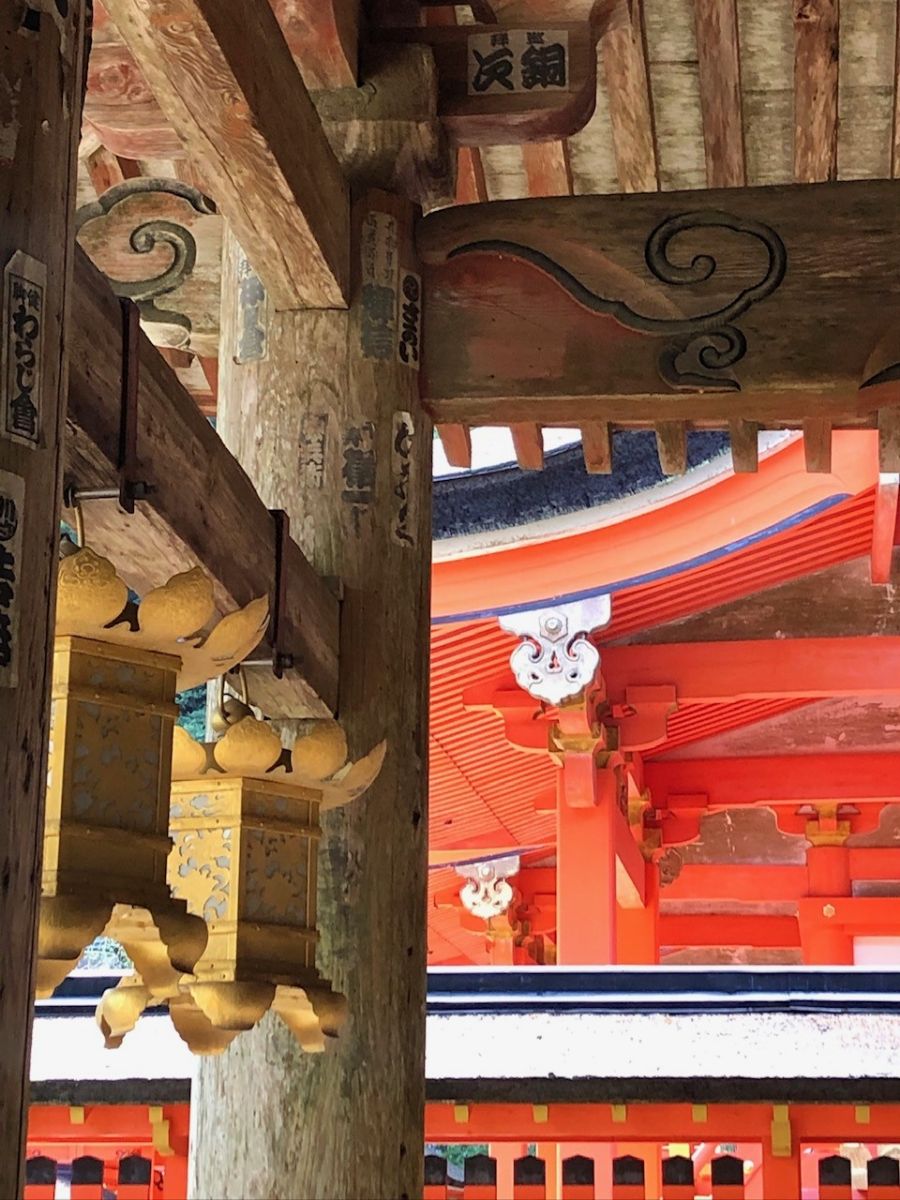
Rock garden at Kongobu-ji Kumano Nachi Shrine
_______________________________
See more on the Kohechi Trail here, and on the Kumano Kodo pilgrimage trails here.
All text and photos © Stephen Barber, 2021